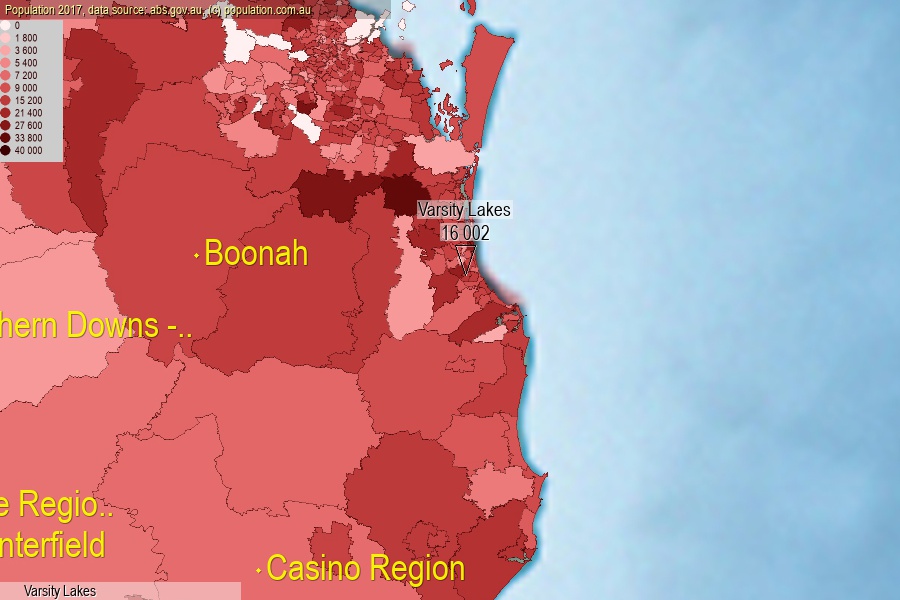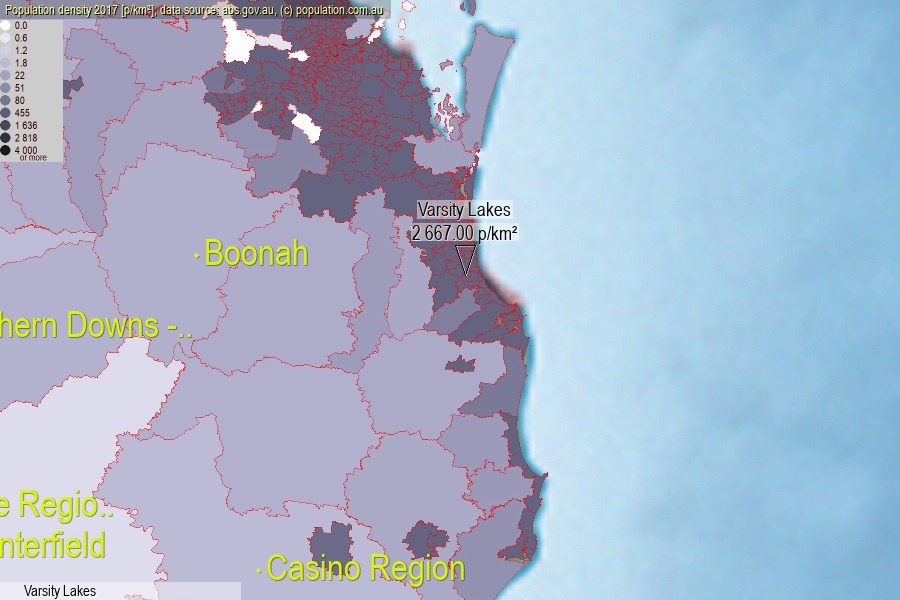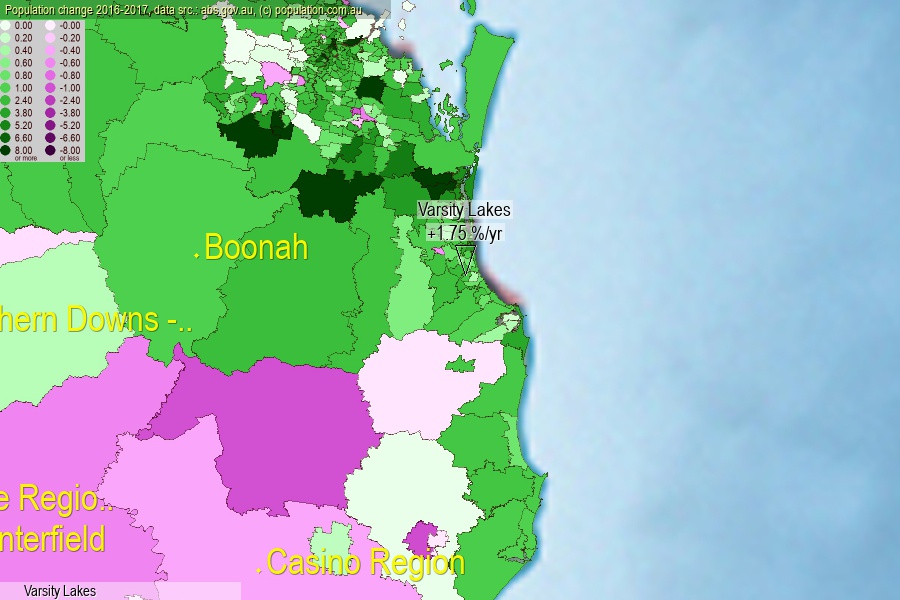 population.com.au
population.com.auLast official estimated population of Varsity Lakes (as Statistical Area Level 2) was 16 002 people (on 2017-06-30)[2]. This was 0.06% of total Australian population and 0.321% of QLD population. Area of Varsity Lakes is 6.00 km², in this year population density was 2 667.00 p/km² . If population growth rate would be same as in period 2016-2017 (+1.75%/yr), Varsity Lakes population in 2025 would be 18 382. [0]



Click to enlarge. Varsity Lakes is located in the center of the images.
Population [people], population density [p./km²] and population change [%/year] [2]
View borders » (new window) [4]
[1991-1992] +17.19 %/Yr.
[1992-1993] +25.58 %/Yr.
[1993-1994] +23.96 %/Yr.
[1994-1995] +43.04 %/Yr.
[1995-1996] +16.31 %/Yr.
[1996-1997] +9.46 %/Yr.
[1997-1998] +4.72 %/Yr.
[1998-1999] +4.22 %/Yr.
[1999-2000] +13.42 %/Yr.
[2000-2001] +6.71 %/Yr.
[2001-2002] +13.99 %/Yr.
[2002-2003] +15.62 %/Yr.
[2003-2004] +14.99 %/Yr.
[2004-2005] +9.97 %/Yr.
[2005-2006] +4.97 %/Yr.
[2006-2007] +9.03 %/Yr.
[2007-2008] +6.28 %/Yr.
[2008-2009] +2.54 %/Yr.
[2009-2010] +0.76 %/Yr.
[2010-2011] +2.65 %/Yr.
[2011-2012] +1.15 %/Yr.
[2012-2013] +1.10 %/Yr.
[2013-2014] +0.44 %/Yr.
[2014-2015] +0.97 %/Yr.
[2015-2016] +1.21 %/Yr.
[2016-2017] +1.75 %/Yr.
[0] Calculated with linear interpolation from officially estimated population
[1] Read more about SA2 and Australian Statistical Geography Standard (ASGS) on abs.gov.au
[2] Population data from Australian Bureau of Statistics (Population and density: 2017; change: 2016-2017)
[3] Digital Boundaries: Australian Statistical Geography Standard (ASGS) 2016.
[4] Border coordinates are simplifyed using Ramer-Douglas-Peucker algorithm.